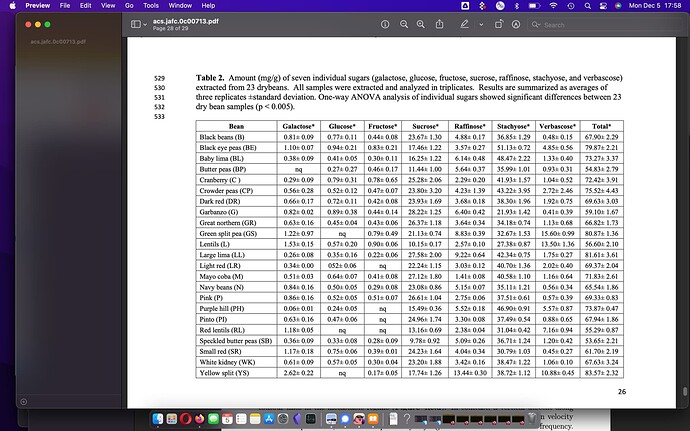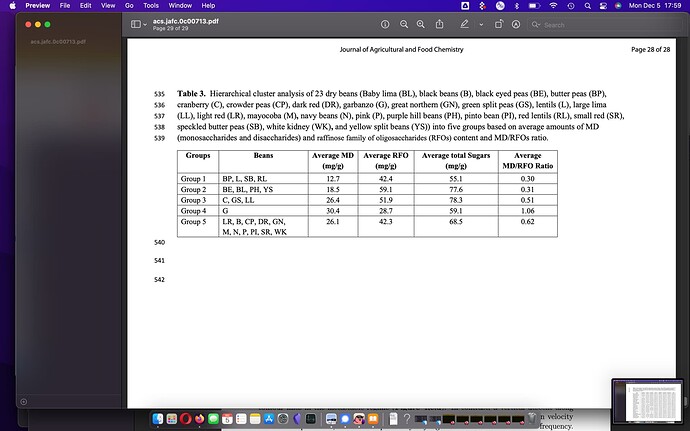What is the chemical composition of the polysaccharides/oligosaccharides/raffinoses found in beans vs bread/rice/corn/pasta and other starches? If post-processed by post-acarbose bifidiobacteria, what molecules are they converted into?
[can someone PDF this, this is VERY impt]
Yellow split beans, large lima, and black eyed peas contained higher amounts of total soluble sugars (79.8-83.6 mg/g), whereas lower amounts were observed in speckled butter peas and lentils (53.6-56.6 mg/g).
everything else equal, I believe high-flatulence foods are BETTER if you can tolerate them more than others (lower calorie bioavailability)
https://onlinelibrary.wiley.com/doi/full/10.1002/leg3.52
There’s a difference between garbanzo beans and lentils too, and it depends on how they’re cooked (I’ve noticed restaurant-quality beans spike my glucose to crazy levels, but store-bought beans often produce barely any spike)
Carbohydrates constitute the main fraction of beans (55%–65% dry weight on average) with polysaccharides as the major constituents, and small but significant amounts of oligosaccharides (31%–76% of total sugars). Carbohydrate fraction of legumes include monosaccharides (ribose, glucose, galactose, and fructose), disaccharides (sucrose and maltose) the soluble sugar fraction, and oligosaccharides of the raffinose family (raffinose, stachyose, and verbascose), besides cellulose, lignin, pectin, galactose, arabinose, mucosa and xylose, that according to some authors, have to be grouped under the concept of “dietary fiber” or “non-digestible carbohydrates
It is important to note that some problems regarding the partial measurement of resistant starch, polydextrose and resistant maltodextrins are encountered in the AOAC method. Most of the low molecular weight soluble dietary fiber (galactooligosaccharides, fructooligosaccharides, etc.) are not measured
Stachyose is not completely digestible by humans and delivers 1.5 to 2.4 kcal/g (6 to 10 kJ/g).


